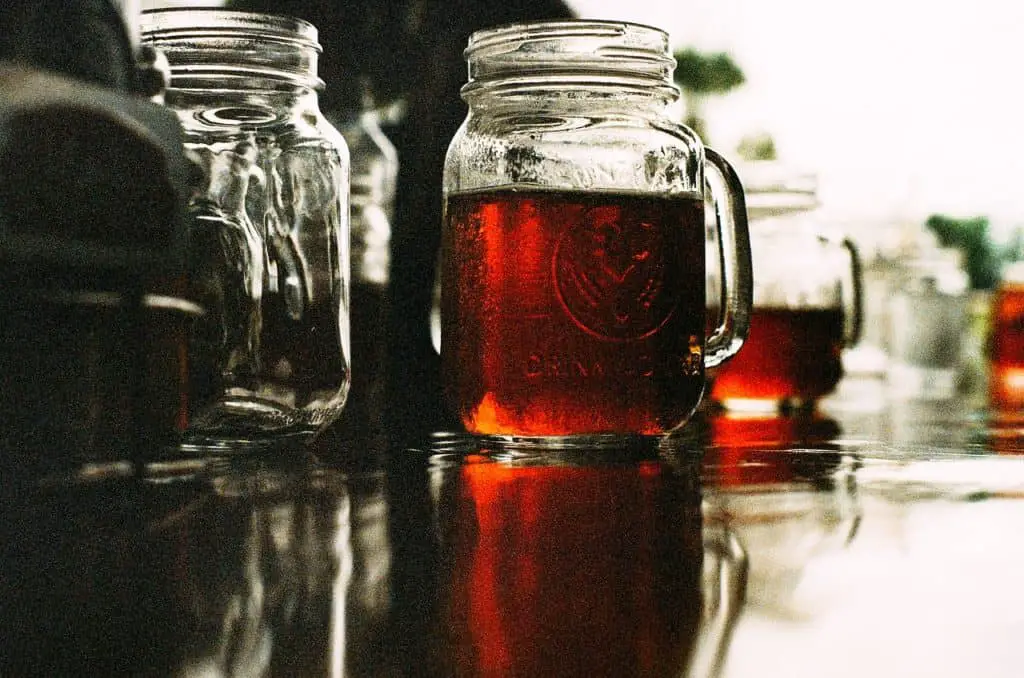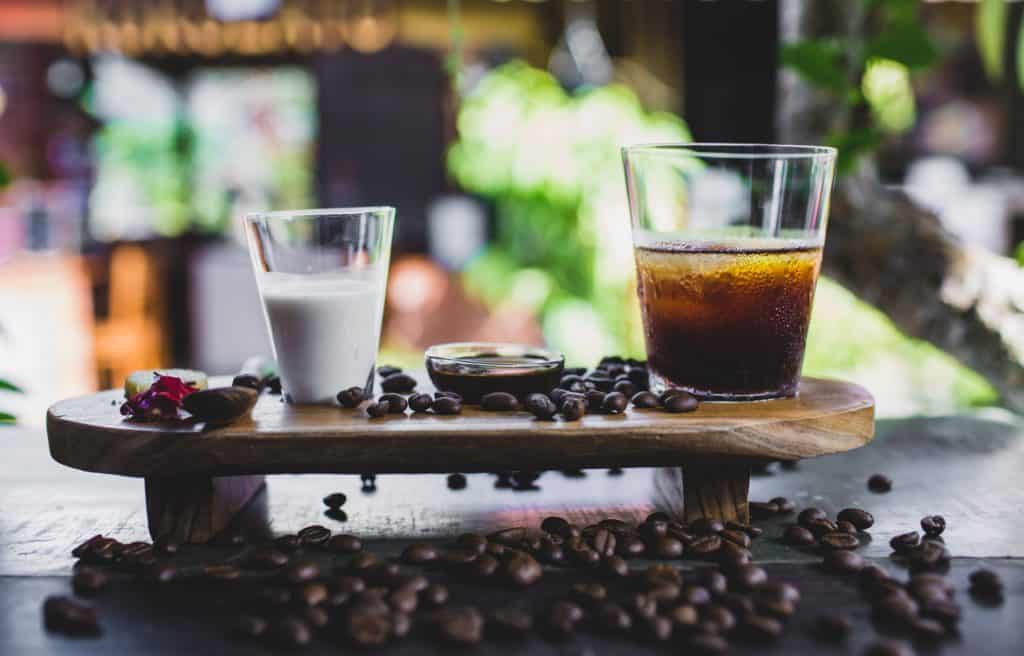
Cold brew coffee is a smooth, refreshing way to enjoy your daily caffeine, and you don’t need fancy gear to make it. A mason jar, a staple in many kitchens, is all it takes to whip up a batch at home.
This guide walks you through the process of making cold brew coffee using a mason jar, from ingredients to step-by-step instructions, and explains why this low-acidity, high-caffeine drink is worth trying. Whether you’re a coffee newbie or a seasoned brewer, you’ll find this method straightforward and rewarding.
Why Choose Cold Brew Coffee?
Cold brew stands out for its unique qualities. The slow, cold-water brewing process extracts less acidity than hot brewing, resulting in a smoother, less bitter cup—perfect if you have a sensitive stomach or prefer milder flavors. Using low-acidity beans, like those from Brazil, enhances this effect, as you noted.
Cold brew also packs a caffeine punch due to its concentrated nature, often containing 1.5-2 times the caffeine of drip coffee, making it a strong pick-me-up. Plus, a batch stays fresh in the fridge for up to two weeks (without milk or creamer), offering grab-and-go convenience. These benefits make cold brew a favorite for both taste and practicality.
What You’ll Need
To make cold brew in a mason jar, gather these essentials:
- 84g whole bean coffee (light-roasted Ethiopia or Kenya recommended)
- 588g room-temperature water
- Digital scale
- Burr coffee grinder
- Large mason jar (32 oz or larger)
- Mesh strainer
- Thin coffee filter or cheesecloth
- Second container (another mason jar or pitcher)
Your ingredient list is spot-on, and the search confirms a 1:7 coffee-to-water ratio is ideal for a balanced concentrate, though 1:5 works for a stronger brew, as you mentioned.
Mason Jar Cold Brew: Recipe Overview
- Brew Time: 14 hours (12-24 hours based on preference)
- Coffee: 84g, coarsely ground
- Water: 588g
- Coffee-to-Water Ratio: 1:7 (or 1:5 for stronger)
- Grind: Coarse (like peppercorns)
- Water Temperature: Room temperature
Step-by-Step Instructions
Follow these steps to make cold brew coffee with a mason jar:
Step 1: Weigh the Coffee
Use a digital scale to measure 84g of whole bean coffee. Light-roasted Ethiopia or Kenya beans bring bright, fruity notes, but any quality coffee works.
Step 2: Grind the Coffee
Grind the beans coarsely with a burr grinder. The grounds should resemble peppercorns in size to ensure proper extraction and easy straining. Your article’s grind size reference is accurate—coarse prevents a gritty brew.
Step 3: Combine Coffee and Water
Add the ground coffee to a large mason jar. Pour in 588g of room-temperature water (1:7 ratio, or 420g for a 1:5 stronger brew). Stir gently once or twice to fully saturate the grounds, ensuring even extraction.
Step 4: Steep
Seal the mason jar with its lid and let it sit at room temperature for 12-24 hours. Your preference of 14 hours is a great middle ground—shorter steeps yield milder flavor, while longer ones increase strength. Avoid refrigerating during steeping, as cold temperatures slow extraction.
Step 5: Strain the Coffee
After steeping, place a mesh strainer lined with a coffee filter or cheesecloth over a second mason jar or container. Pour the coffee through to separate the grounds. Rinse the filter if using a reusable one, as you suggested.
Step 6: Double-Strain (Optional)
For a cleaner brew, strain a second time. Clean the original mason jar, place a fresh filter or cheesecloth over it, and pour the coffee through again. This step, while optional as you noted, removes fine sediment for a smoother texture.
Step 7: Serve
The result is a cold brew concentrate. To serve, pour over ice and dilute with a 1:1 ratio of water, milk, or a milk alternative. Adjust to taste—some prefer a stronger concentrate with less dilution.
Step 8: Store
Store leftover concentrate in a sealed mason jar in the fridge, where it stays fresh for up to two weeks without additives. Your storage tip is correct—milk or creamer shortens shelf life.
Tips and Variations

- Container Flexibility: Mason jars are great, but any lidded container (glass pitcher, French press) works as long as it holds the coffee and water. Your note about alternatives is practical for those avoiding the mason jar trend.
- Bean Choice: Experiment with beans to suit your taste. Brazilian beans lower acidity, while Ethiopian or Kenyan beans add brightness.
- Grind Size: A burr grinder ensures consistency. Blade grinders can produce uneven grounds, leading to a muddy brew.
- Steep Time: Test 12, 14, or 18 hours to find your sweet spot. Longer steeps boost caffeine but may add bitterness.
Why Mason Jars Work
Mason jars are affordable, widely available, and perfectly sized for small-batch cold brew (32 oz fits the 84g coffee + 588g water recipe). Their airtight lids prevent spills and keep the brew fresh during steeping and storage. Plus, they’re easy to clean and reusable, making them a sustainable choice. Your article’s emphasis on mason jars’ versatility is spot-on—they’re a timeless tool for everything from canning to coffee.
Cold Brew vs. Other Methods
The search adds context: cold brew differs from iced coffee, which is hot-brewed then chilled, often tasting more acidic. Cold brew’s low-acidity profile and high caffeine make it unique, aligning with your reasons for drinking it. It’s also more forgiving than hot brewing—over-extraction is less likely, making it beginner-friendly.
Here’s a quick look at cold brew’s benefits:
| Benefit | Details | Why It Matters |
|---|---|---|
| Low Acidity | Cold water extracts less acid | Gentler on stomach, smoother taste |
| High Caffeine | Concentrated brew boosts caffeine | Stronger kick, less volume needed |
| Long Shelf Life | Stays fresh for 2 weeks in fridge | Convenient for batch brewing |
| Easy to Make | Simple process, minimal gear | Accessible for beginners |
Final Thoughts
Making cold brew coffee with a mason jar is simple, affordable, and delivers a smooth, potent brew that lasts. With just a jar, coffee, and water, you can enjoy café-quality cold brew at home—no pricey gadgets required. Follow this recipe, tweak the steep time or beans to your liking, and savor the low-acidity, high-caffeine goodness. Whether you’re brewing for yourself or impressing friends, this mason jar method is a game-changer for coffee drinkers.

